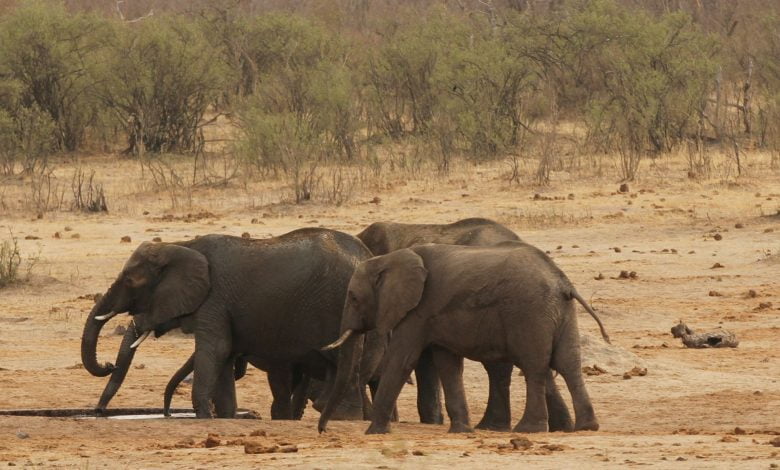Anatomy and morphology of the elephants

Size
Physical Differences Between African and Asian Elephants. 1. Ear size 2. Forehead shape 3. Only some Asians have tusks 4. Trunk rings amount 5. Toenail count 6. Tail size 7. Back arch/dip
African bush elephant skeleton
Elephants are the largest living terrestrial animals. African bush elephants are the largest species, with males being 304–336 cm (10 ft 0 in–11 ft 0 in) tall at the shoulder with a body mass of 5.2–6.9 t (5.7–7.6 short tons) and females standing 247–273 cm (8 ft 1 in–8 ft 11 in) tall at the shoulder with a body mass of 2.6–3.5 t (2.9–3.9 short tons). Male Asian elephants are usually about 261–289 cm (8 ft 7 in–9 ft 6 in) tall at the shoulder and 3.5–4.6 t (3.9–5.1 short tons) whereas females are 228–252 cm (7 ft 6 in–8 ft 3 in) tall at the shoulder and 2.3–3.1 t (2.5–3.4 short tons). African forest elephants are the smallest species, with males usually being around 209–231 cm (6 ft 10 in–7 ft 7 in) tall at the shoulder and 1.7–2.3 t (1.9–2.5 short tons). Male African bush elephants are typically 23% taller than females, whereas male Asian elephants are only around 15% taller than females.[25]
Bones
The skeleton of the elephant is made up of 326–351 bones.[36] The vertebrae are connected by tight joints, which limit the backbone’s flexibility. African elephants have 21 pairs of ribs, while Asian elephants have 19 or 20 pairs.[37]
Head
An elephant’s skull is resilient enough to withstand the forces generated by the leverage of the tusks and head-to-head collisions. The back of the skull is flattened and spread out, creating arches that protect the brain in every direction.[38] The skull contains air cavities (sinuses) that reduce the weight of the skull while maintaining overall strength. These cavities give the inside of the skull a honeycomb-like appearance. The cranium is particularly large and provides enough room for the attachment of muscles to support the entire head. The lower jaw is solid and heavy.[36] Because of the size of the head, the neck is relatively short to provide better support.[6] Lacking a lacrimal apparatus, the eye relies on the harderian gland to keep it moist. A durable nictitating membrane protects the eye globe. The animal’s field of vision is compromised by the location and limited mobility of the eyes.[39] Elephants are considered dichromats[40] and they can see well in dim light but not in bright light.[41]
Ears
Elephant ears have thick bases with thin tips. The ear flaps, or pinnae, contain numerous blood vessels called capillaries. Warm blood flows into the capillaries, helping to release excess body heat into the environment. This occurs when the pinnae are still, and the animal can enhance the effect by flapping them. Larger ear surfaces contain more capillaries, and more heat can be released. Of all the elephants, African bush elephants live in the hottest climates, and have the largest ear flaps.[42] Elephants are capable of hearing at low frequencies and are most sensitive at 1 kHz (in close proximity to the Soprano C).[43]
